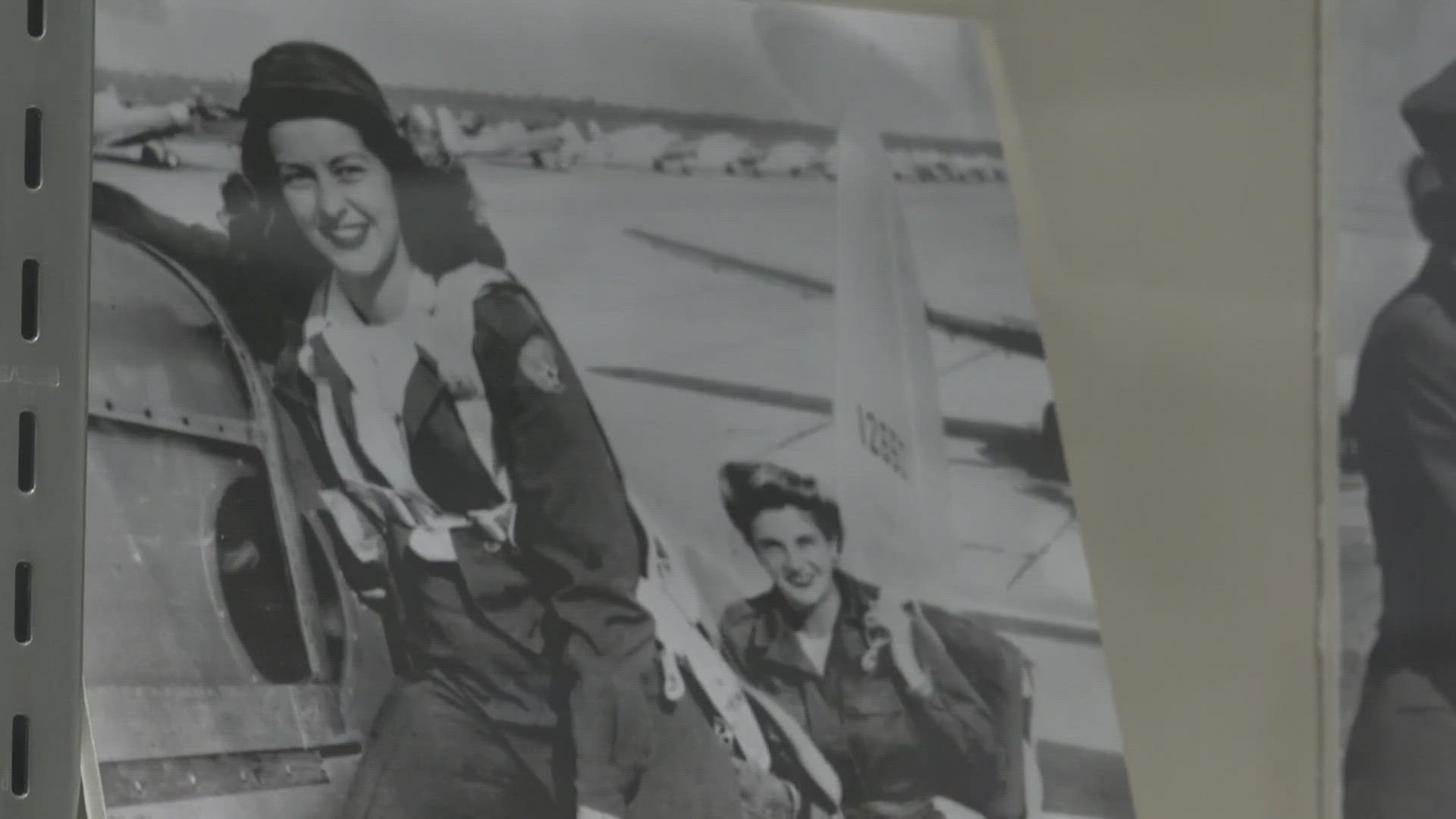MESA, Arizona — A display case along the east wall of one of the hangars at the Arizona Commemorative Air Force Museum holds pictures, orders, and a uniform of the first women to fly aircraft for the U.S. military.
Among the items displayed across the museum is a picture of one of those women, Virginia Warren.
“She was a pilot in the WASP, transporting aircraft all over the United States,” historian for the museum, Bobbie Carleton, said as she flips through a book of Warren’s oral history.
WASP stands for Women Airforce Service Pilot; the organization originally stood up to help ferry military aircraft across the United States during World War II.
“The young men going off to war and signing up were not the only ones wanting to do their bit,” Carleton said. “The women wanted to participate as well.”
Two women, Jacqueline Cochran and Nancy Love, Carleton said, are credited with starting the WASPs.
Cochran would go on to become the director of women pilots, leading the effort to help train more than 1,000 women pilots in Texas to help transport military aircraft, according to National Archives records.
“It actually didn’t take long for some of these folks to find out that these women were actually pretty darn capable,” Carleton said.
One need, Carleton said, the WASPs helped with in Arizona was towing banners for gunnery practice at bases in Kingman and Douglas, among others.
“They didn’t have enough male pilots to do that,” Carleton said. “So the women started towing banners.”
Later, WASPs were trained on B-29 bombers before male pilots. Carleton said that’s because the B-29 was tricky to start.
“They came up with their strategy to get the male pilots to accept the training was to train up some of the WASP women pilots to fly it and do the demos for the men,” Carleton said with a laugh. “Which is really funny.”
A few years back, the museum tracked over 30 WASPs who either flew in and out of Arizona bases or who later came to live in the state. Warren was among those who came to live in Arizona after the war.
Martha Mitchell Wilkins, a WASP, also moved to Arizona, Carleton said. Mitchell and her husband opened a fixed-based operation in Phoenix.
Another WASP, Byrd Howell Granger, also moved to Arizona and became a professor with the University of Arizona, Carleton said.
A report filed in the National Archives found the WASPs flew 60 million miles for the Army Air Forces, and 38 women pilots died.
The WASP program was deactivated at the end of 1944.
Still, it took over three decades for the women pilots to be recognized for their military service.
“Some of them were able to collect their military benefits after the fact, so to speak, but also to receive the ability to be buried in Arlington,” Carleton said.
Up to Speed
Catch up on the latest news and stories on the 12News YouTube channel. Subscribe today.

